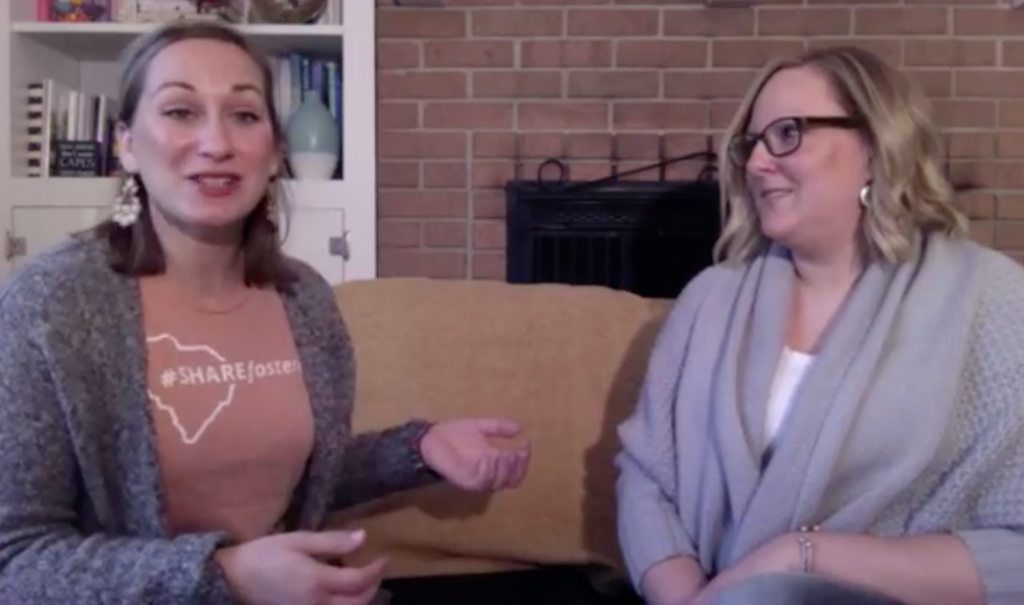
When Kids Need a Place to Sleep for the Night, Emergency Foster Homes Offer a Safe Landing
Emergency foster care is a short-term care solution for children and youth entering care until a relative or long-term foster family is found. These emergency or short-term foster families are the bridge for children between entering care and a long-term home.
Rebecca works on the Upstate Placement Team and today she is sharing with us the process of placing children into emergency homes on #FosterFridayLive. Rebecca and her team call families when a child enters care in one of the ten counties that they manage. After collecting information regarding the child or children that have entered care, the team calls foster families on the open bed list to see if they’d be willing to accept placement of the child.

What is an emergency placement?
When we’ve gotten to the end of the day or close to the end of the day and we’ve been unsuccessful in finding a long-term placement for a child, we will start calling our short-term families to see if they are interested in an overnight. It could be that we have a family available for the child but they may not be able to accept placement for a couple days so we need a short-term place for the child to go. So that’s what the emergency is- a child that is at risk of being in the office for that night.

We are not allowed to leave any children in the office overnight. We want to make sure the child has a bed to sleep in overnight in a home to secure them. We can’t risk them being in the office or violating any Michelle H laws. They are determined an emergency placement when we’ve been unsuccessful in finding a long-term placement so if they come in at 10 o’clock at night and we’ve called a few long-term homes, we are going to call short-term homes. Of course, kids come in all throughout the day; so even during the day if we’ve called all our homes and gotten to the bottom of the list, we’re gonna try that short-term list. Maybe we’ve already gotten all our answers (people saying “no”) at 2pm, we’re going to keep working on it, but they need a bed for that night.
Is there a difference in how emergency placements are made compared to the regular or long-term placement process?
We have a full list of all our DSS families that we will access. They are color-coded; if you’re a long-term family you are one color, if you are a short term family then you are another color. Once we’ve exhausted all our long-term options for that day, we start looking at our short-term families for an appropriate placement for that child. A family can be both long-term and short-term; they’d be color-coded for both. (For example, grey means closed; green means go or open for long-term, orange means short-term, emergency, respite. Or some combination of green/orange.) The call comes in the same way from the same people. We reach out to our counterparts at private agencies and they have their own protocols for how they manage their families.
The call may be in the middle of the day or the middle of the night.
Who might make a good short term foster family? If someone was thinking about accepting emergency or short-term placements, what should they ask themselves first or assess about their family situation?
First and foremost is willingness. You know your family and what you can handle. If you can roll with the punches, you may be really good for short-term. If you don’t do well with change or you need to uphold a really rigid schedule, this may not be for you. We have all kinds of families that do short-term care- families that work, families that don’t work. It’s how much sleep can you handle at night? If you don’t do well with lack of sleep, that’s something to think about when you’re telling us what you’re open for.

To get on the short-term list, you need to update your preferences. If you are managed by DSS you can reach out to the placement unit in your region or talk directly to your Family Support Coordinator. We can’t reach out to privately licensed families. Those CPAs know their families and will work with them to update their preferences (long-term, short-term, age, gender, etc.).
What should a family who is doing short-term care know in advance of getting started?
If you’re open to short-term care, you can have your age preferences. Have a deep conversation with your family about what you’re willing to accept so we can note that on our list. We know which families are open to pretty much anything. Keep us updated.
What’s the need for emergency families?
The need is huge for families that can take large sibling groups. When a family enters care as a large sibling group, to be able to place them together for one night before they split ways, is a wonderful thing for them. So we may work a little longer on children that are in large sibling groups to see if we can keep some of them together rather than placing them one by one- even if it’s just for an overnight.

An overnight is really wonderful especially late in the night. Keeping three or four kids together. Another thing is older children, over 6 or 7. There is a need for more homes that will take those children period, but even just for an overnight. We have to do diligent efforts to keep children in 7+ in a foster home statewide before discussing the option of group care. That sometimes takes more than a day or two. So there is a need for temporary placement – overnight or maybe a few days- so that we can do due diligence while we really seek a good fit home.
There is not a need for emergency homes for babies. Now short-term may be a need- respite for babies. But there are so many long-term families that will accept babies, there is not a need for emergency placements.
What is included in short-term foster care? How long does it last?
- Emergency- Overnight or for a few days while a long-term placement is found
- Emergency Incentive- Higher need kids that may have disrupted a placement and need a place to land for the night or until an appropriate home (standard or therapeutic) is found. This is night to night.
- Temporary- Families that are open to a longer range of emergency or short-term care, up to a few days to find a home most appropriate for the child. If placed on Friday night this will be through the weekend. There is not staff available to manage moves over the weekend in addition to new children coming into care.
- Respite– A predetermined time frame that a foster family will agree to watch children that are currently in the care of another foster family.
We are daily working on identifying long-term placements that are appropriate for all these kids. There is no set time that it takes, but it is a daily thing. We’re not going to forget about a child.

When you accept the child for short-term care, we will ask you about your parameters. When can you accept the child? When does the child need to be picked up? So then we will notify the county of the placement and the needs. The family has some control over the amount of time the child is in the home. The child can go to school or stay in the DSS Office during the day if the family works. We will work with you.
Watch the full interview with Rebecca on Youtube.
There is a need for more families that will accept placements of all kinds. The goal is that every child has a safe place to sleep and hopefully a place to call home for as long as it’s needed. If you are interested in learning more about becoming a foster parent, contact [email protected] and we’ll help get you connected to the resources you need.
Want to learn more about the way that foster care placements are made? Read more from a past #FosterFridayLive with Martha on the placement process here.



